Introduction
Websites can be simple or complex, depending on the business goal. When building websites and applications, there are plenty of decisions to make, all subject to the project's needs. From initial planning to publishing and maintenance, the website should portray the client's business, products, or service at its best worldwide.
Regardless of its size and complexities, the most successful businesses on the web know how to leverage technologies, visual elements, and methods to fill in any gaps that can enhance their experience and encourage specific behavior.
Web design and development require a blend of skills and knowledge of various technologies. Innovative technological requirements constitute the building blocks of modern websites.
In many cases, collaborating with an interactive web design agency helps translate these technological foundations into user-facing experiences that feel intuitive, responsive, and engaging. This enables creatives and strategists to explore new possibilities for capturing users' attention.
To build a successful website that thrives in the online world, you must leave the outdated technologies and principles and embrace the modern cutting-edge solutions that can make the website experience more enjoyable, interactive, and immersive as possible.
One such approach or solution that is making a remarkable surge in the modern digital landscape is called gamification. In this context, we're not referring to actual game behemoths of the video game industry, such as Call of Duty or Resistance. Not even modern browser-based online games like Genshin Impact or similar role-playing games.
Instead, the gaming philosophy incorporates interactive elements to bring life to different websites. This can include the enticing allure of badges, rewards, and similar incentives that actively keep users on the website and influence their behavior to do the intended business goal.
Using different elements or mechanics to solve problems and engage users are more familiar than some might think. The term gamification might be new, but the concept has been around for decades. Since the 1960s, many authors used playful writing styles to explore the adventure side of life.
Games and playful concepts have been engraved in our cultural record and have been emerging to different social groups regardless of locations around the world. As our society becomes more intertwined with games, website designers and developers embracing the concept of gamification should come as no surprise.
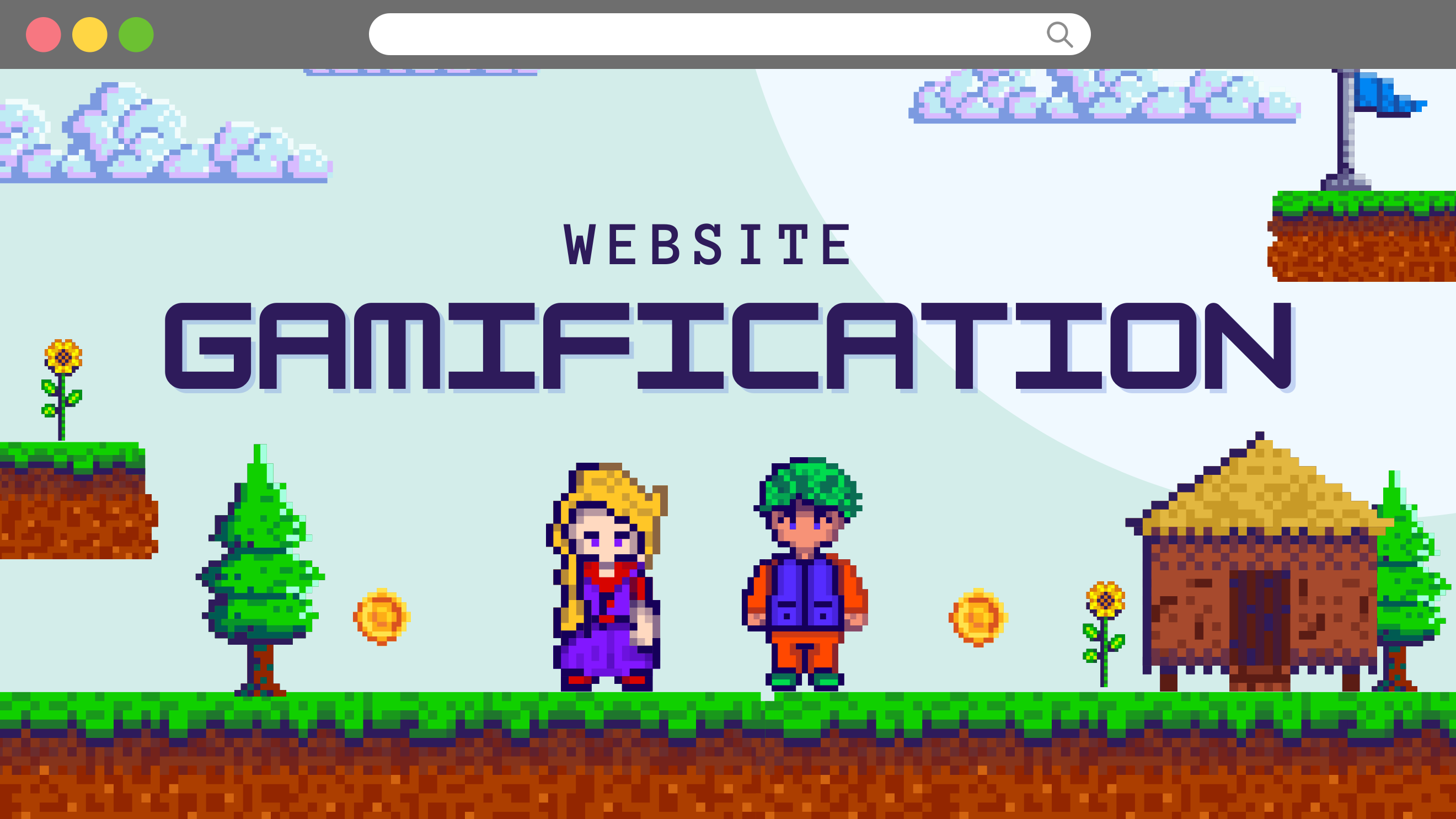
To further engage potential customers and users, many online businesses have been using gamification techniques for several years and are now enjoying the benefits of it. Website gamification has been widely utilized across various industries, including e-commerce, education, fitness, and social networking, to name a few.
The heart of gamification lies in tapping into the innate human drive for competition, achievement, and rewards. This can involve integrating reward structures, accomplishment stages, and subtle feedback loops while utilizing a game mechanic like points, badges, challenges, and levels.
Adding game-like elements helps websites align users' interests with the intrinsic motivations of various gaming mechanics to keep them coming back and even recommend them to their social circles. It is a motivational strategy to encourage users to complete tasks, achieve goals, and take specific actions. Adding gamification to your website has proven to be an effective strategy to drive user engagement and increase user retention, and can we make that user experience predictable, repeatable, and financially rewarding.
In this article, we will demystify the core concepts of gamification as they apply to websites and applications, provide some good examples and explain what you should keep in mind and avoid when achieving website gamification.
Defining Gamification
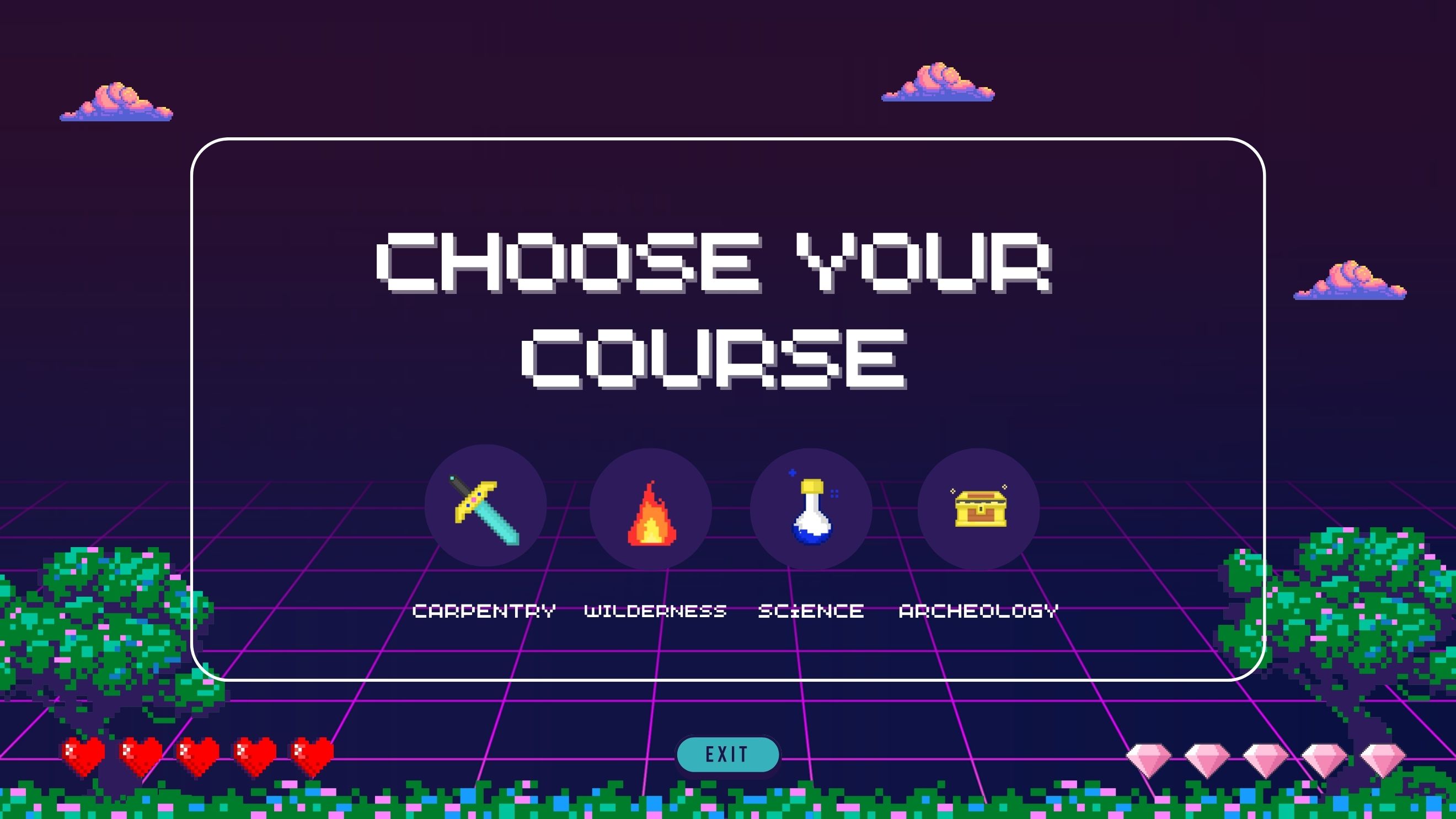
Gamification has been around for decades, but the application on websites and digital platforms significantly gained popularity in the middle of the 2000s. The term "gamification" originated in 2002 by British consultant and game developer Nick Pelling, but it wasn't until a few years later that it gained broader recognition and usage.
It was created as a deliberately ugly word to outline "applying game-like accelerated user interface design to make electronic transactions both enjoyable and fast." By the latter part of 2010, gamification achieved the required search volume to register on Google Trends.
What is Gamification?
The term gamification usually refers to the process of game-thinking and game mechanics in an attempt to increase user engagement. This includes incorporating game-like elements, mechanics, and game design methods into non-game contexts like websites and applications.
Gamified elements can tap into the natural human drive for contention, achievement, and rewards. These game elements allow users to use websites and applications (such as a business website) and release dopamine in the brain, reinforcing the intended action and producing unprecedented behavior change.
Gamification is visible in many website settings, including business, fitness, education, and software industries. Gamification provides an outlet for websites for customer behavior data and insights, which can amplify this loop with social proof and feedback.
Gamification can be used as a tool for:
- Engagement. It is an effective tool for adding more engagement and user participation.
- Motivational Strategy. It encourages users to complete tasks, achieve goals, and influence behavior toward the intended purpose.
- User Data Collection. It can track and collect valuable user behavior, interactions, and preferences data.
- User Retention. Incorporating game-like features such as earning points, badges, and leaderboards can get the users hooked on the promise of digital rewards and keep them returning.
- User Experience. It is closely related to user experience design as it provides a fun environment for users to use and engage on your website.
Benefits of website gamification
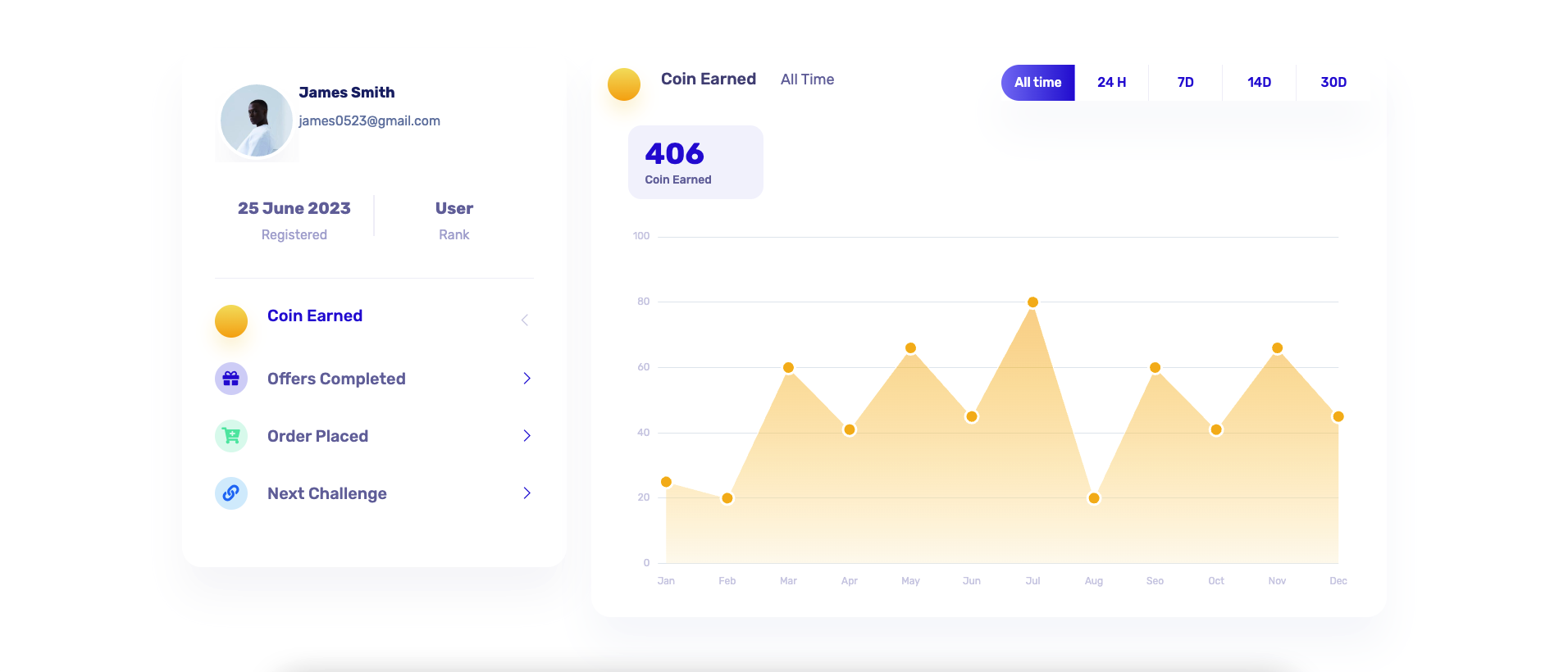
Gamification on a website carries a myriad of benefits that significantly improve both user experience and business performance. An outstanding benefit is its ability to increase user engagement; this is due to the interactive elements that gamification adds to the site, which can not only entertain users through fun game mechanics, but also encourage their learning and skills development. Additionally, it offers personalized user experiences, allowing users to feel seen and recognized on an individual level.
Another important advantage of gamification is that it can effectively boost your website's search engine optimization (SEO) ranking metrics. This means that your website becomes more visible to people who are searching for relevant content, leading to an increase in site traffic.
Also, the interactivity brought by gamification empowers each blog post and page, making them more attractive and engaging to visitors. Consequently, this can also increase the number of website or blog subscribers.
Gamification serves as an effective tool for collecting user data, which can be vital for understanding user behavior and making necessary adjustments. It is also an instrumental strategy to influence users' decisions towards achieving a specific business intended goal.
By carefully tailoring your gamification strategy to align with these goals, you can subtly guide users towards desired actions or outcomes.
Gamification can augment the social interaction on your website, thereby fostering community building. As users get involved with your site's games and challenges, they are more likely to engage with each other, share their experiences, and foster a sense of community.
This sense of community can not only provide a positive user experience but also significantly increase business revenue as users become more invested in your website and what it offers.
How does gamification work?
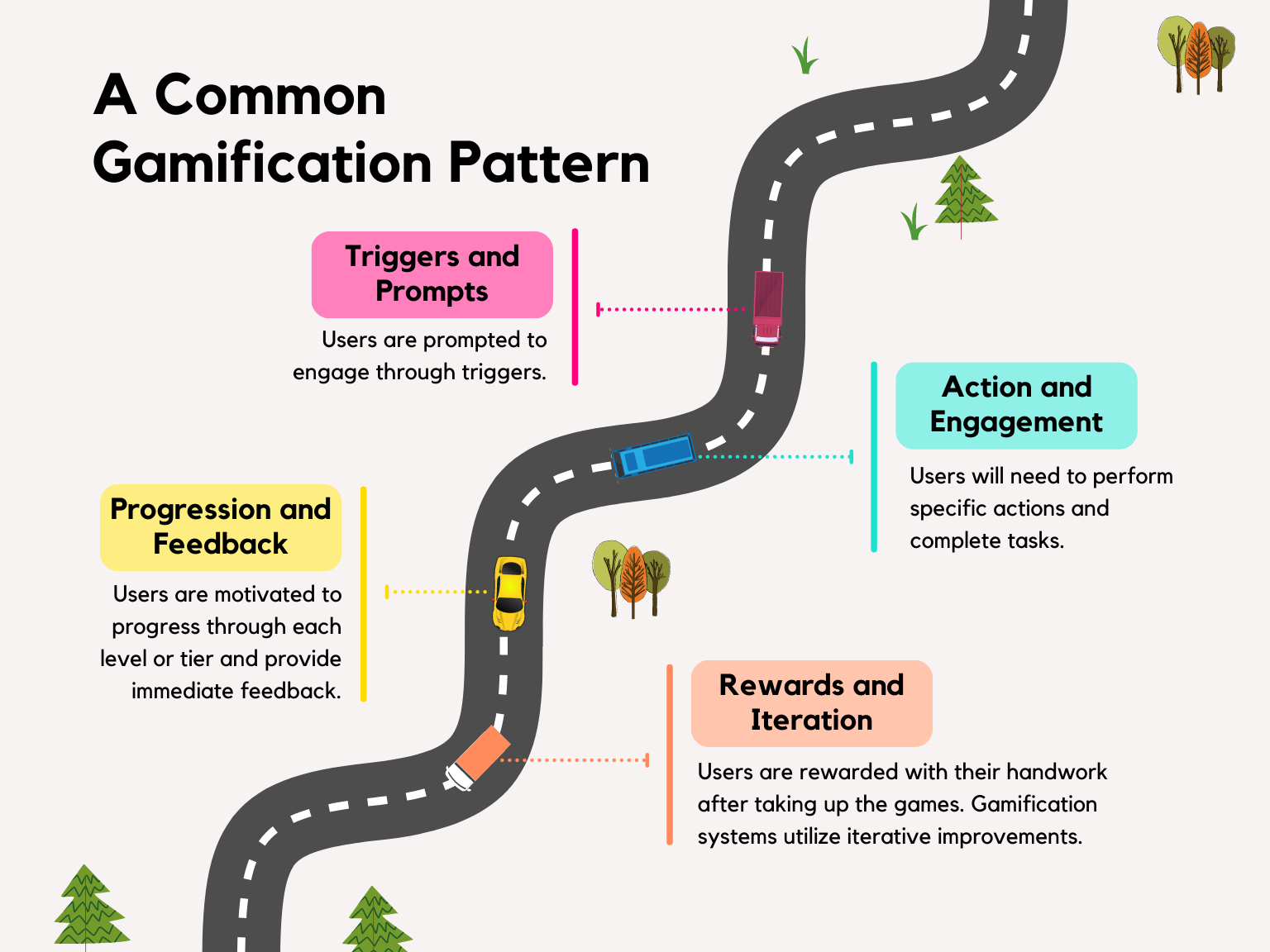
Gamification produces engagement models by the utilization of game design methodologies. The focus is on various individuals in society, inspiring them to sustain their curiosity and accomplish objectives they might be unaware of. Every game designer's dream is to challenge users to do mundane tasks and engage them profoundly and more meaningfully.
The road to gamification success is full of challenges as there are some factors to consider when building its structure, depending on the goal and the type of website. Based on the specific website visitors and audience, players could adopt the goals provided by the website.
Using video game-like visuals, gamification implements mini-games, point systems, and role-playing game mechanics accompanied by a progress or status bar.
There is yet to be an official pattern of how gamification works on a website. Many times, there exist only possibilities to add gamification components and offer real-life practical challenges and encouragement at each level.
Getting them emotionally involved assists in reaching their highest potential. However, there are prevalent patterns observed in most implementations.
1. Triggers and Prompts
In this phase, users are prompted to engage through triggers such as notifications or visual cues to let them know that a new challenge or reward is available and is ready for a specific action. In some cases, this is also visible under the user's profile.
2. Action and Engagement
Motivated by the triggers and prompts, the users must perform specific actions and complete tasks such as answering questions, making purchases, or doing website interactions to earn more points or rewards as they progress. The progress bars play a critical role in this phase as it shows the task's progress, which can also be visible on user profiles.
3. Progression and Feedback
In this phase, users are motivated to progress through each level or tier and provide immediate feedback after completing each set of actions. Users may also be presented with other users' achievements to encourage them to advance to higher levels.
4. Rewards and Iteration
The end goal of every challenge or task is to reward users with their handwork after taking up the games. Gamification systems often utilize iterative improvements by continuously assessing user behavior and adjusting the game-like elements to ensure that the gamified experience consistently remains engaging and effective.
Key Elements of Gamification
Here are some of the most common essential gamification elements:
Challenges and Tasks
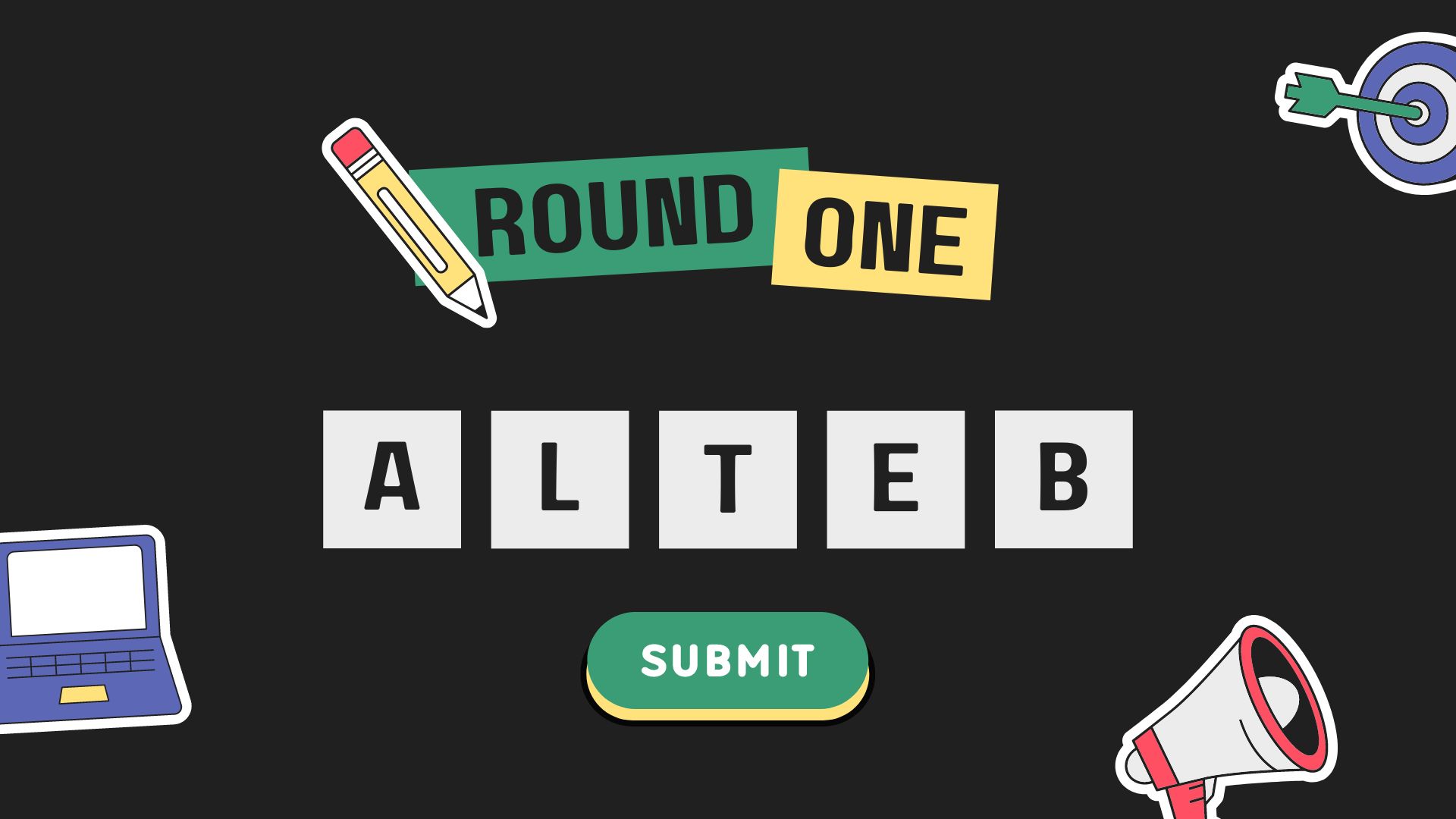
Putting game-like features will only be engaging with challenges to complete. When dealing with website gamification, you can integrate many game challenge ideas, such as quizzes, puzzles, or even interactive tasks, to continuously allow the users to play the games and engage with your content.
Points and Scoring System

The primary measurement of the progress of any game system is through the collection of points. Users accumulate points upon finishing specific tasks and will add up as the game advances, giving them a sense of achievement and advancement.
Badges and Achievements
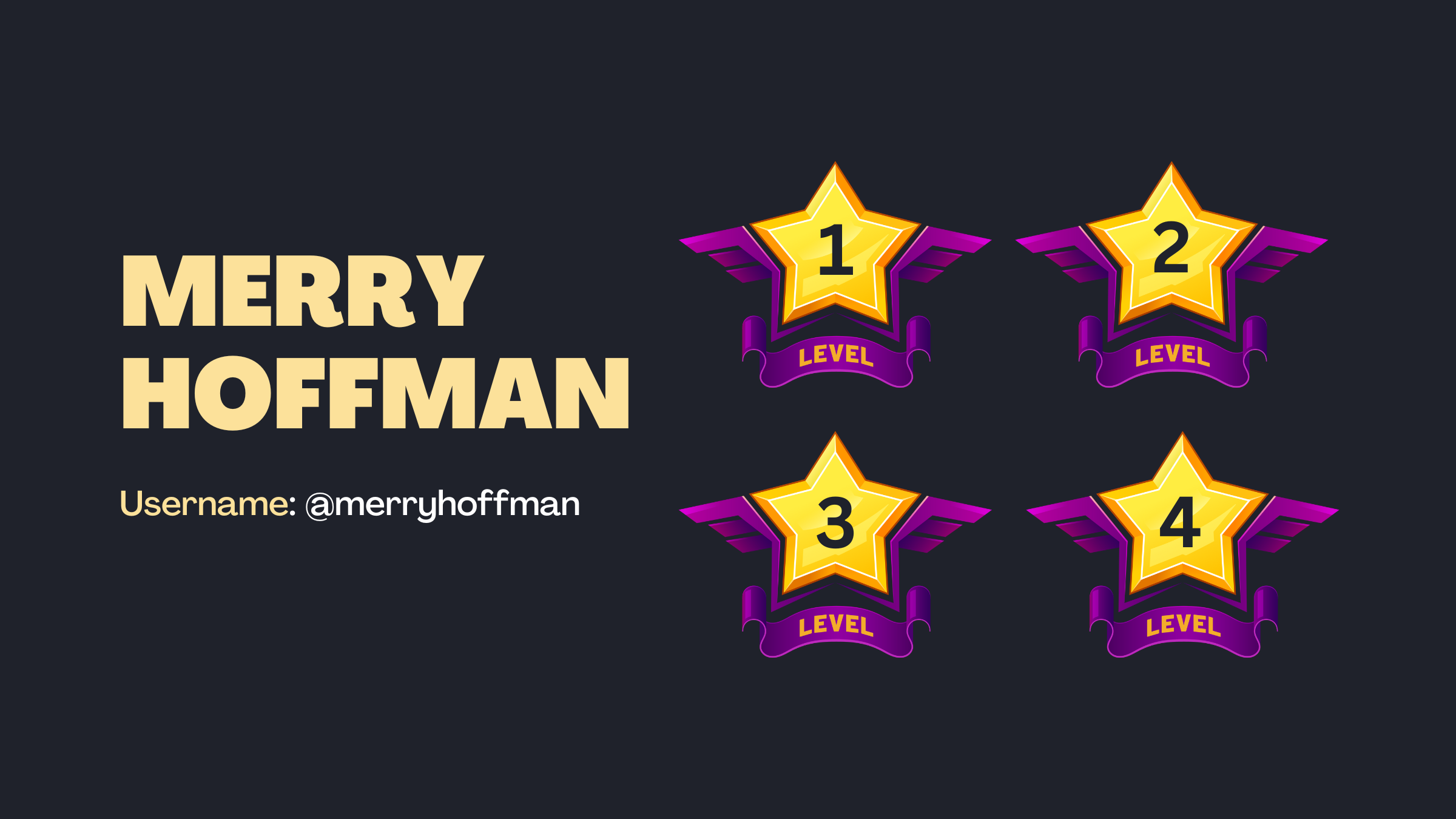
These are visual achievement representations for achieving significant milestones. They serve as elements of gratifications and awards for completing specific actions and motivate users to strive for more.
Leaderboards and Competitions
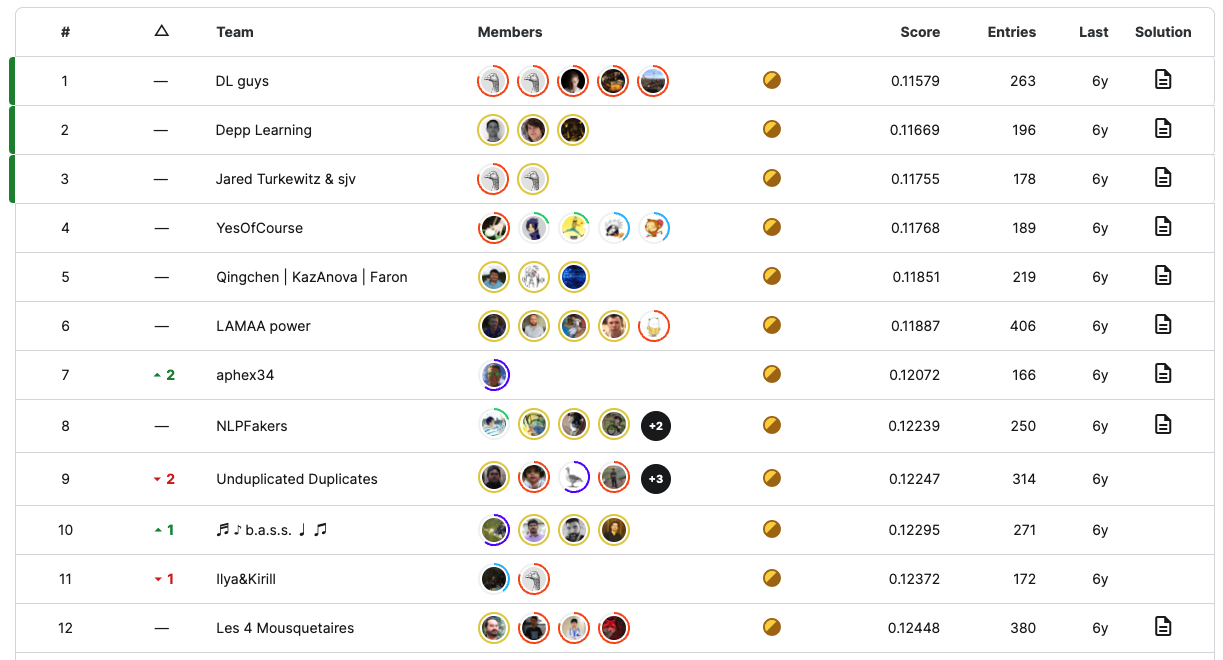
Users' performance is usually displayed on a leaderboard on every gamified website. This fosters competition and showcases user rankings according to points to create a sense of competition for the highest score.
Progress and Completeness Bars

To foster a feeling of advancement and expertise, progress bars and completion trackers are implemented to segment games or mechanics into different levels and tiers. This is commonly seen in user profiles and is a way to display the user's current status and encourage them to unlock new challenges, rewards, or features.
Rewards and Incentives

Motivating users can be achieved by offering convertible rewards to tangible or intangible incentives like discounts, virtual items, or exclusive content to pursue the tasks on a gamification system.
How to Implement Gamification on Your Website
There is no ultimate way to implement gamification on your website, as there are underlying factors to consider when integrating them. Using the basics of gamification, player motivation, game mechanics, and their application, you must play around the interplay of structure and develop a strategy that will work on your particular project.
Below are some of the steps and practices you can do to implement gamification on your website.
Define Your Market and Motivations
Before integrating any gamification, whether mini-games or progressive mechanics type, you must identify your market and why you think they would engage on your website. Understanding your target audience, their preferences, and motivations can help you personalize the gamified elements better to increase the chances of successful implementation.
As an example, users can be motivated to play games for the following reasons:
- To learn or become a master of a particular craft
- To relax
- To have fun
- To socialize
The more you know about your target market and motivations, the easier it is to design a game experience that will drive user behavior in your desired way.
Identify Gamified Elements
The gamification mechanics include points, badges, progress bars, leaderboards, challenges/quests, and rewards. Decide which elements you should use that align with your website and objectives.
Choose Your Point System
Points are essential to gamification regardless of whether it's being shared among users. It's crucial to leverage point design systems in your gamification design experience. Below are some of the standard point systems that you can use:
- Experience points or XP Points. Refers to points that users earn XP points by completing tasks, achieving goals, or participating in activities.
- Redeemable points or RP Points. Refers to points that users can collect and redeem for rewards or incentives.
- Karma points. Refers to points that are associated with social or community-based systems. This type of point is used only for sharing them with other users.
- Skill points. Refers to points represent a user's proficiency or expertise in specific skills
- Reputation points. Refers to the points that reflect the user's standing, credibility, trustworthiness, and reputation within a community or system.
To successfully implement gamification on your website, one of the most accessible and most straightforward point systems to get started with an XP, as it displays information about how you monitor, rank, and guide your player. The rest of the point systems mentioned above can be applied to intermediate to complex cases, such as virtual economies and secondary markets.
Design Your Game Levels or Tiers
In most games, levels imply progress. Levels, stages, or tiers are a marker for users to know where they are in a gaming experience. Each level should be designed so that users instantly see that the level has changed. This can involve developing different colors, challenges, and rewards for each level. The level of difficulty should not be linear. Instead, use various techniques to create a progressive difficulty curve that challenges players in a balanced and engaging manner.
Define Rewards and Badges
Developing rewards and badges is not a walk in the park. Many factors, such as aesthetics, colors, UI, and icons, may be involved the in the process. For example, if you design a reward badge for repeating website visitors, you can use a gold icon accompanied by a creative caption.
Integrate Gamified Elements
Once you identified all of the necessary information and mechanics about your gamification plan, you must ensure that the gamified elements blend seamlessly into your website's design and interface upon integration.
Provide Feedback and Reinforcement
Feedback is about informing users where they are in the game. Ensure that users receive immediate and clear feedback when they complete challenges or earn points to reinforce desired behaviors.
Track, Analyze, and Improve
Lastly, it's essential to track and analyze the analytics of user behavior and engagement. Tracking, analyzing, and continuously improving gamification mechanics and elements are vital to creating a successful and engaging gamified experience.
WordPress and Gamification
While gamification is not an inherent feature of the core WordPress package, the versatility of WordPress as a content management system (CMS) and the availability of gamification plugins make it possible to gamify various types of websites across different industries.
Whether it's an educational or e-commerce website, you can simultaneously engage users and generate leads. Using WordPress plugins, you can integrate interactive quizzes, progress tracking, and reward systems for completing tasks or achieving specific objectives.
Here is the list of best gamification plugins available in the WordPress library to get you started:
What to Avoid in Website Gamification
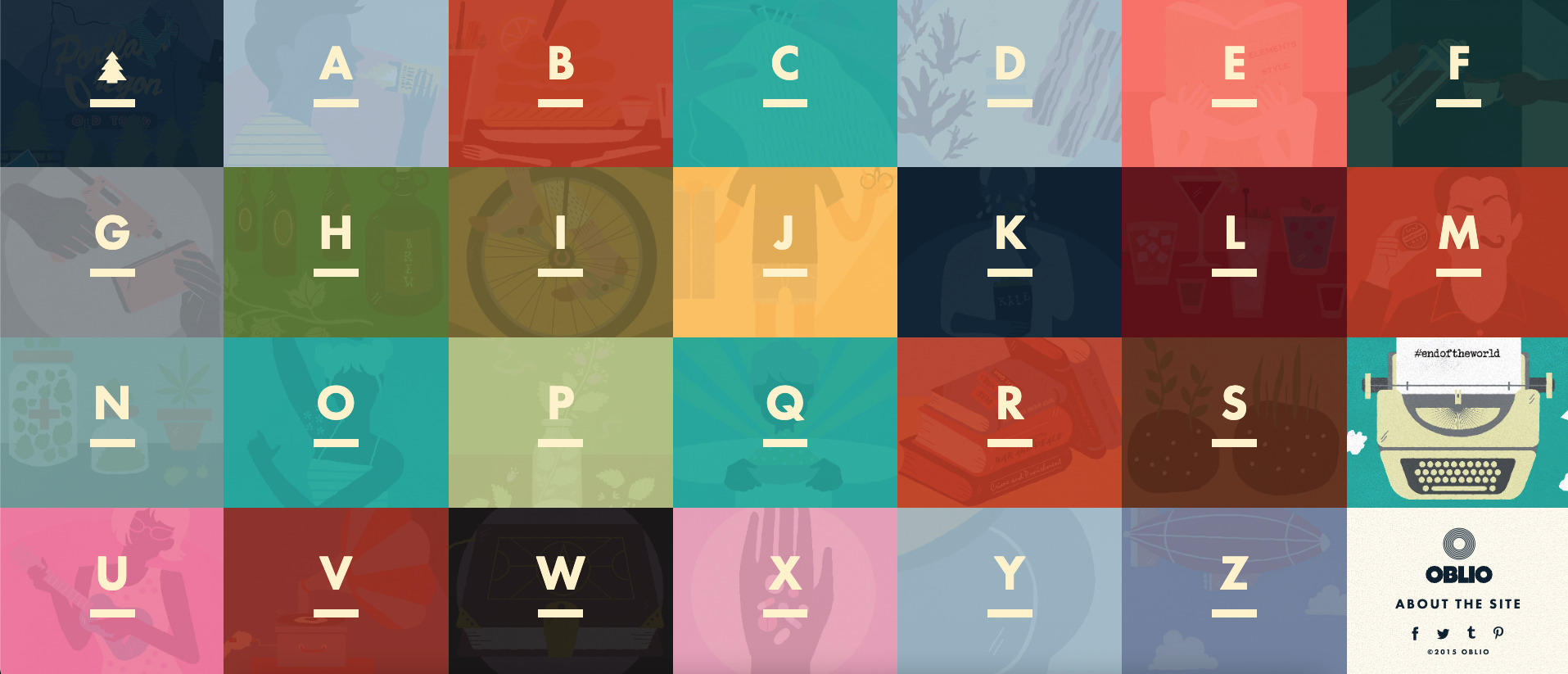
While website gamification can be a powerful tool to provide structure, engage, motivate, and drive desired actions, there are some pitfalls to avoid while integrating a gamification plan into your website, including:
Over Gamification
As you implement gamification to your website, you might be tempted to overdo it. Complex gamified elements, challenges, and reward systems may overwhelm users and disrupt the user experience.
Over-gamification may make users perceive the website as gimmicky and frustrate them to leave your website instead of earning more blog subscribers or visitors.
Unclear instructions and mechanics
Ignoring narrative structure and poorly communicated objectives can lead to confusion. Gamification engages and motivates users across all tasks or challenges using specific game mechanics.
Users expect clarity and guidance when engaging with gamified elements, and failing to provide them can result in confusion and frustration, leading to user abandonment.
Improper Point Systems
Whatever you choose, you'll need to select the right on-point system for your website. The point system can be overt, direct, and highly motivational. However, if they are inadequate for the website's gamification goal, users lose interest, leading to website abandonment.
Among the five kinds of point systems mentioned above, experience points (XP) are most suitable for websites, as they do not serve any currency or economy within the system. This can be a good point system when getting started with gamification.
Lack of Meaningful Rewards
Gamification can boost users' intrinsic motivations through a reward system, keeping them engaged and returning for more. A well-designed reward system plays a significant role in this process.
Rewards should be relevant, meaningful and provide value to the user's interest. If rewards lack value, they can bore the users and demotivate them to participate continuously.
Unbalance Difficulty Levels
In game design, the level of difficulty is not linear. This means it should not have sudden spikes or prolonged plateaus to reach a specific level. Instead, the difficulty level increases curvilinearly and should provide a challenging yet achievable user experience.
Examples of Gamification on the Web
Gamification examples are all over the web. They come in different kinds, from pure visual gamification to business-driven types of game interaction.
Let's look into a few popular gamification examples below:
The Avenging Llama
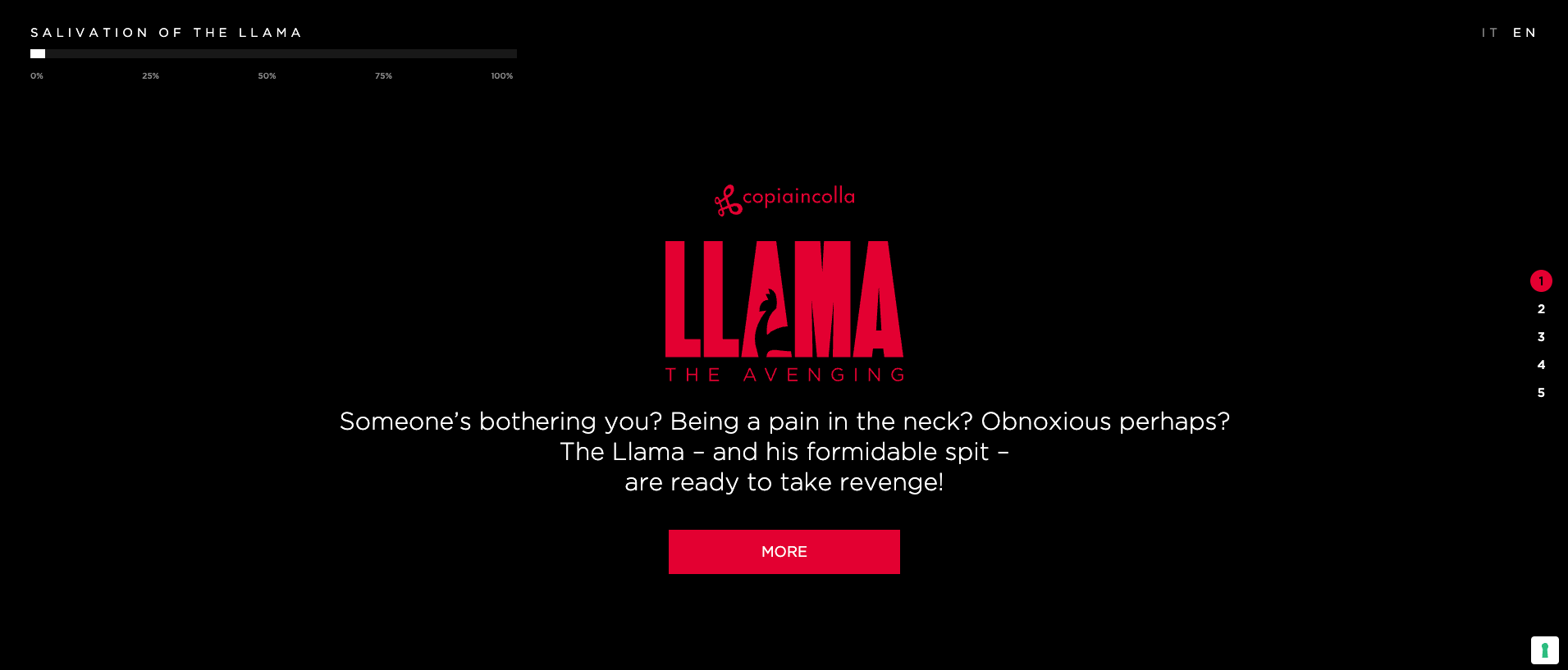
The Avenging Llama is an excellent example of gamification as it uses gamification elements to transform its small service into an entertaining process.
Users can choose a llama face for their "revenge" and follow five steps to complete the process. It sounds like a creative and humorous way to engage users through gamification.
WPMU DEV
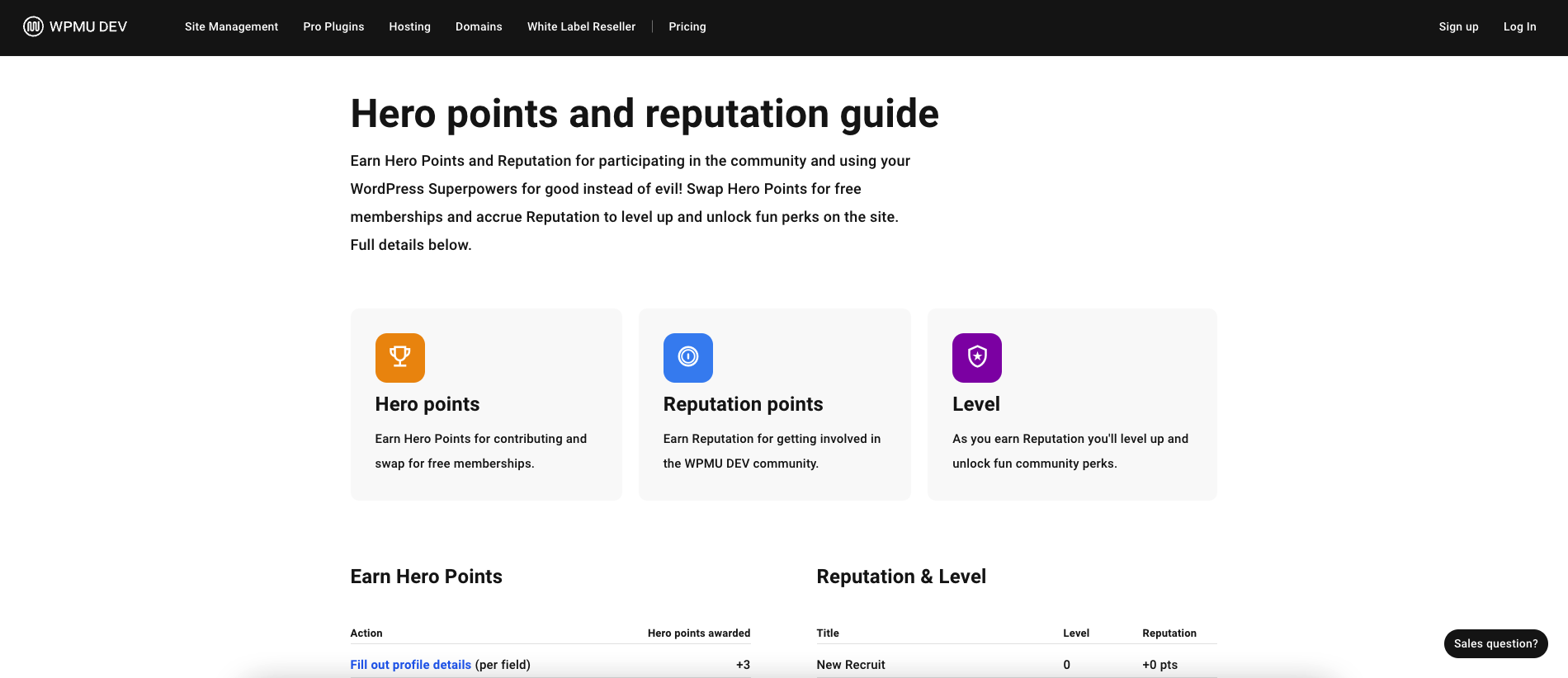
Another great example of website gamification is the WPMU DEV's Hero Point System. The Hero Point System is designed to make engaging with their WordPress community a fun and rewarding experience.
Users can earn Hero Points and Reputation by participating in the community, helping other users, and using their WordPress skills to contribute positively.
Interland
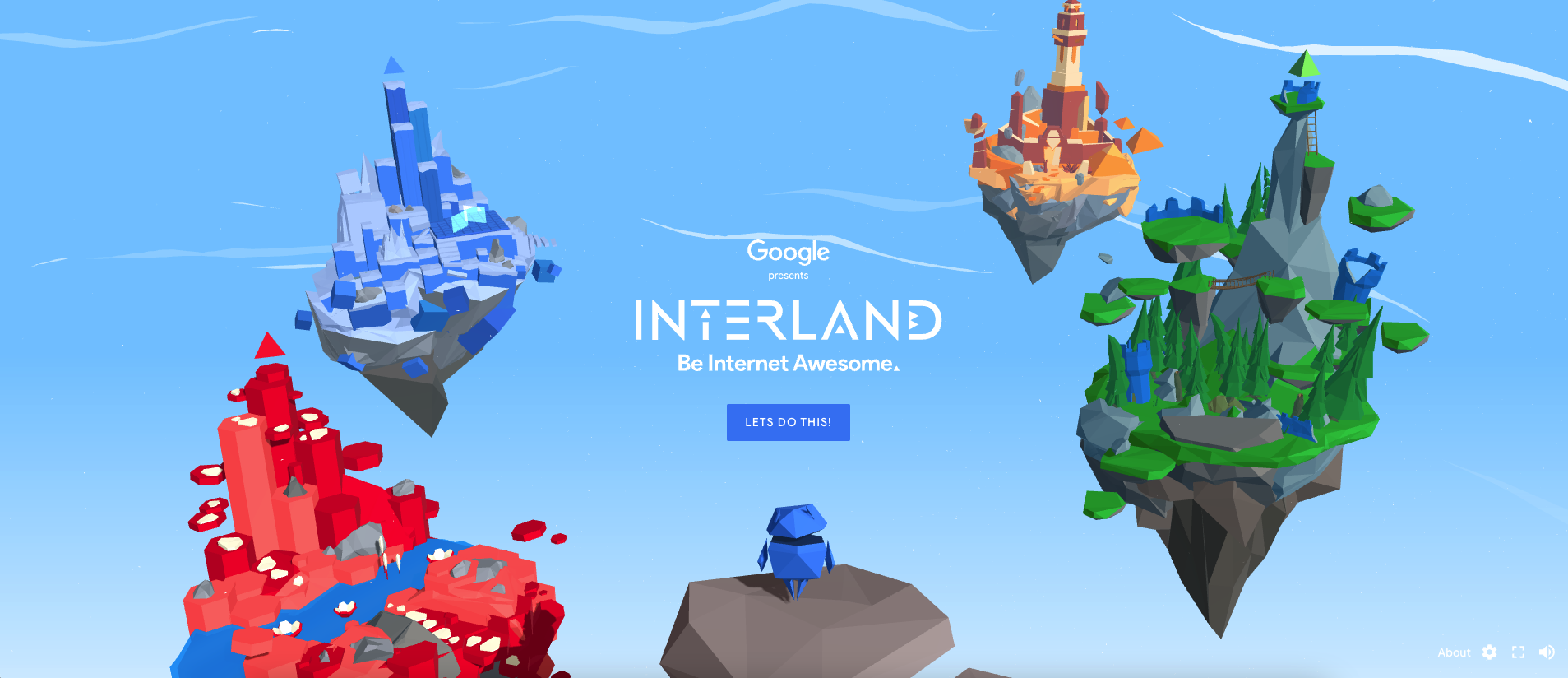
Interland is a type of gamification that can be applied to an educational website. It utilizes mini-games to deliver its educational content, including puzzles, platforming, and other interactive elements to teach Internet safety and online courtesy to new Internet users, primarily targeted at children.
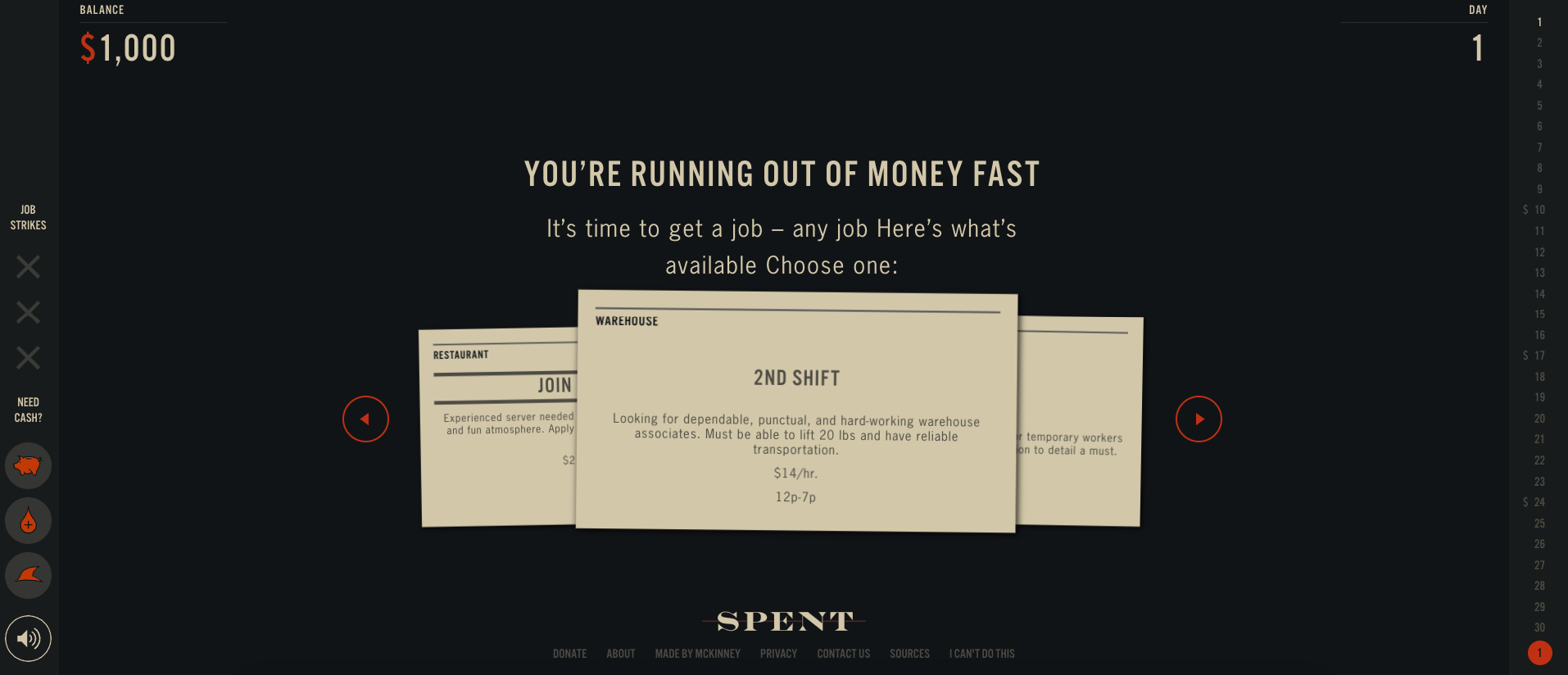
Visualizing stories provides another means of implementing gamification and games. Combining gamification and storytelling, Playspent provides an outstanding demonstration of creating a captivating and emotionally immersive encounter. This website invites users to step into the shoes of a low-wage earner facing financial challenges.
Job loss, financial struggles, and housing insecurity are some of the real-life issues that Playspent tackles. It makes the experience more impactful, thus fostering recognition of crucial social and economic difficulties.
BuzzFeed
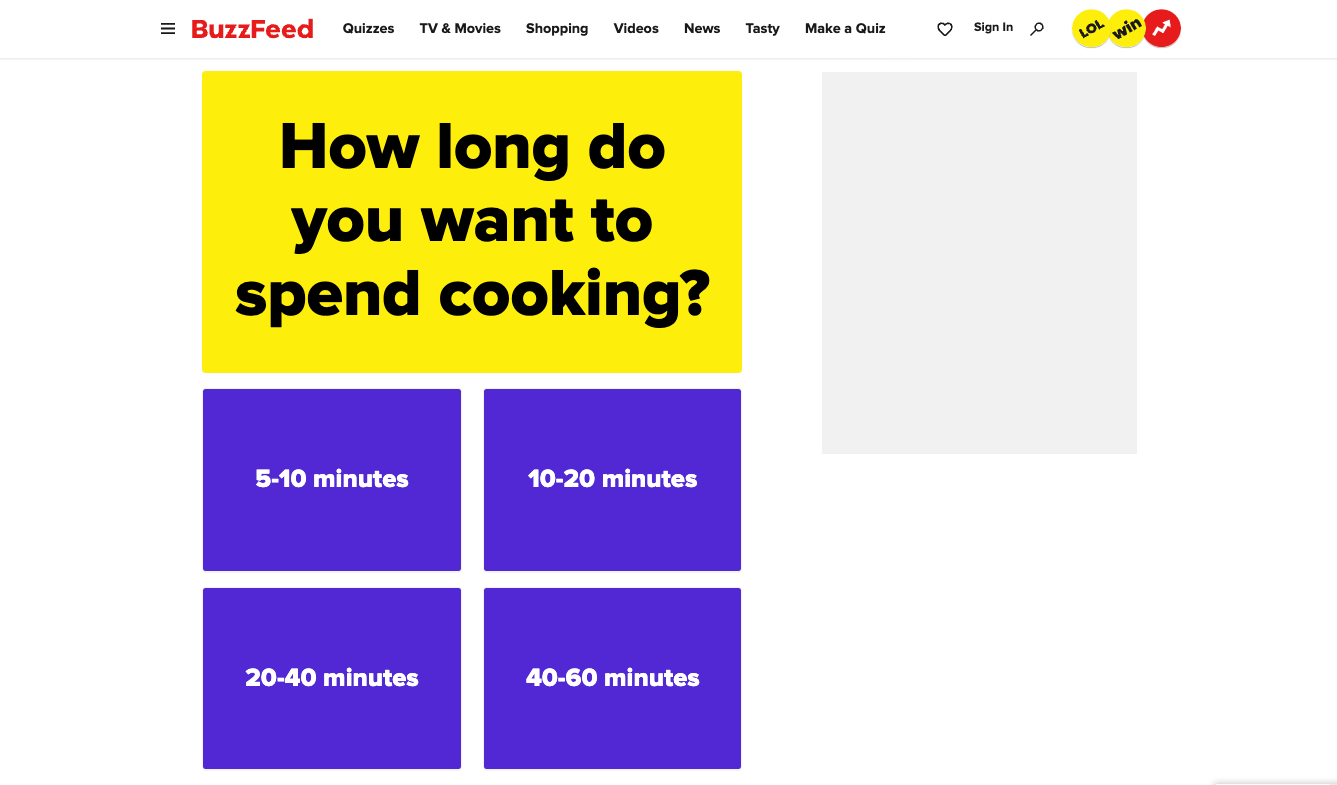
Buzzfeed is primarily known as a news website but has gained significant popularity through its interactive and entertaining quizzes. Buzzfeed showcases ways to gamify a website with fun, engaging, and shareable interactive quizzes.
Users are enticed to participate in these quiz-like diversions due to their entertaining nature and the curiosity to discover which character, personality type, or outcome they align with. In addition, many of Buzzfeed's quizzes encourage users to participate and create quizzes, fostering community involvement and increasing user engagement.
Conclusion
Gamification has proven an excellent way to implement games and improve user engagement. It relies entirely on game mechanics to engage users and solve problems seamlessly.
While creating an impactful gamified website is challenging, thoroughly developing each key element is paramount. Gamification's primary role is to enhance user engagement. Tailoring the gamification approach to the preferences and interests of the users can successfully strengthen your intended behaviors.
Jul 27, 2023
